-
TrimGT3
-
Engine4.0L Flat-6
-
Power502 HP / 346 LB-FT
-
Transmission7-Speed Dual-Clutch Auto
-
0-60 Time3.2 Seconds
-
Top Speed197 MPH
-
DrivetrainRWD
-
Engine PlacementRear
-
Curb Weight3,164 LBS
-
Seating2
-
Cargo4.6 Cu-Ft
-
Base Price$162,450
-
As Tested Price$197,670
MALIBU, Calif. — We've all been making returns to places we once frequented. Restaurants, offices, outside in general. There's likely a common theme, though: it's not the same as it used to be. Such is life, of course, but it's still a little sad when the once familiar now feels different. Or ruined.
Well, the Porsche 911 GT3 has returned. As a 911, it is certainly familiar, but as it has adopted the new 992 generation, Porsche's latest naturally aspirated, track-taming scalpel also feels different. Ruined? Ha.
Normally to test such a car, I would've been dispatched to a race track somewhere – Road Atlanta, say, where I drove the last GT3 RS. This time, with Covid still a thing, I'd need suitable public roads, which meant making a return to Malibu for the first time since 2018. Because in case you didn't know, there are some awfully special roads there suitable for something like the 2021 GT3. Ish.
This is, after all, a car that set a lap time of 6:59.927 minutes around the Nürburgring Nordschleife, which is a whopping 17 seconds quicker than its predecessor. The new-and-improved 992 generation has something to do with that, certainly, but as always with the GT3, Porsche systematically cut weight, upgraded components and borrowed from its motorsports wing to create something that's comprehensively more distinctive than the typical sports car variant. It looks like a 911, but it drives like a different car.
Once again, the 911 GT3 features a 4.0-liter flat-six. Period, no turbocharger. Driving a naturally aspirated car these days is rare enough, let alone one that revs to 9,000 rpm and reaches its peak 502 horsepower at 8,400 rpm. So yeah, not ruined. In fact, Porsche says it's "practically identical to the engine used in the new 911 GT3 Cup race car." Adding to the audible joy of listening to an engine wail to nine grand is the GT3's stainless steel Sport Exhaust.
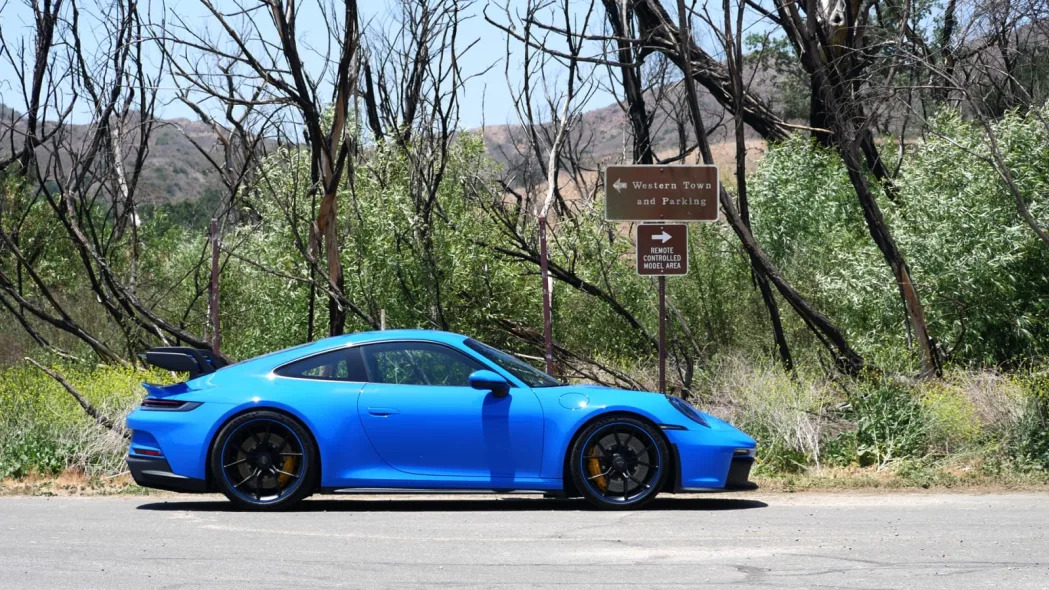
The thing is, though, the standard seven-speed PDK dual-clutch automated manual rarely sees the need to get anywhere close to that redline. As I wasn't driving on a track, it mostly shifted around 6,500 to 7,000 rpm. That's still higher than most cars' ceilings, but is far from the zesty, Pavarotti-reaching-crescendo you get at full boil. While you don't need to use the PDK's paddles for the purposes of going fast (Sport+ mode knows exactly when to upshift and downshift, thank you very much), you'll want to use them just to make things sound as interesting as possible. You could also get the no-cost-option six-speed manual. Again, not ruined.
The same cannot be said for the drive route. Mention "the snake" to any car enthusiast in the Greater Los Angeles area, and they should immediately know you're not referring to a reptile or Jake Roberts. It's a sublime, twisty bit on Mulholland Highway north of Malibu just east of Kanan Dume Road. Though I used to drive it weekly as part of routine vehicle testing, I hadn't done so since moving in 2017. I still haven't. The snake has been ruined, not by Covid obviously, but by catastrophic wildfires in November 2018 that to this day render it impassable. It's not the only bit of my old Malibu stomping grounds that remains scorched and closed to traffic.
I knew that going in, but instead of looking up which spots were closed, I decided to find out for myself. The worst that could happen would be needing to turn around and re-running some serpentine bit of road. In the new GT3. Oh no. I start off on Las Flores Canyon Road, an almost comical collection of steep, tight turns. Bigger, more powerful cars like the 911 typically aren't well suited to it, but this GT3 is indeed different.
This is the first series production 911 to have a double-wishbone front suspension, with a design adapted from the Le Mans-winning 911 RSR race car. Porsche says it results in "extraordinarily agile turn-in behavior." No kidding. The first turn of the wheel is a genuine surprise, as the steering is noticeably quicker than the 911 norm. It's almost Italian. Not surprisingly, it's also beautifully precise and communicative, but replacing the 911's usual rubber suspension bits with ball joints increases the feedback even more. If this isn't the best steering, period, it's probably the Cayman GT4 or some exotic I just haven't driven.
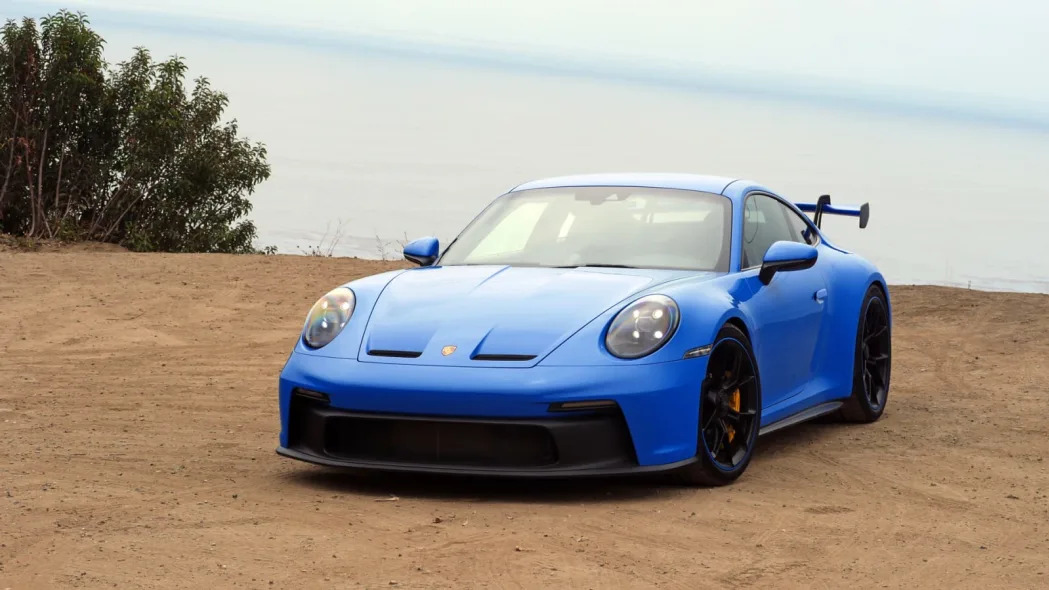
The steering story doesn't end there. A huge part of the GT3's agility on tighter, more technical roads like Las Flores is the standard rear-axle steering system that turns the wheels by up to 2 degrees to reduce the turning radius. The result is a car that whips around hairpins with a composure of a smaller, lighter car.
And here's the thing about smaller, lighter cars: You don't have to drive them that fast to enjoy yourself. By contrast, most high-powered machines these days make driving fast so easy that you're bound to find yourself a bit bored, in need of a track or possibly thrown in jail. The GT3 may be a high-powered machine, but it's surprisingly still a treat to drive at perfectly sane, even legal speeds on public roads. There's so much agility, so much communication and so much glorious noise that you feel fully involved regardless of speed. That's ultimately this car's most triumphant attribute.
And besides the agility gained from its reworked suspension and standard rear-wheel steering, the GT3 really is lighter than other 911s. Its curb weight of 3,164 pounds with PDK is 190 pounds less than a base Carrera and 471 pounds lighter than a 911 Turbo. The manual-equipped car is even lighter at 3,126 pounds, which is in the ballpark of the 718 Cayman. This Jenny Craig treatment is the result of stripping things out like 26 pounds worth of back seat and sound deadening (you do notice that) plus plenty of unique components. The PDK transmission has seven speeds instead of eight, and weighs 40 pounds less (it also has a manual-like shift knob instead of the 911's lame paddle). Carbon fiber reinforced plastic is used for the hood, rear spoiler and wing, and as an option, the roof. The windows are lightweight glass, the staggered-sized wheels are forged aluminum, and although the brakes are the same size as those of the 911 Turbo (408 mm), they weigh 17% less. Our test car had the optional ceramic composite brakes, which are a further 50% lighter than that. A LiFePO4 starter battery alone strips 22 pounds out of the car, while the same amount is saved compared to the last GT3 with the stainless steel Sport Exhaust.
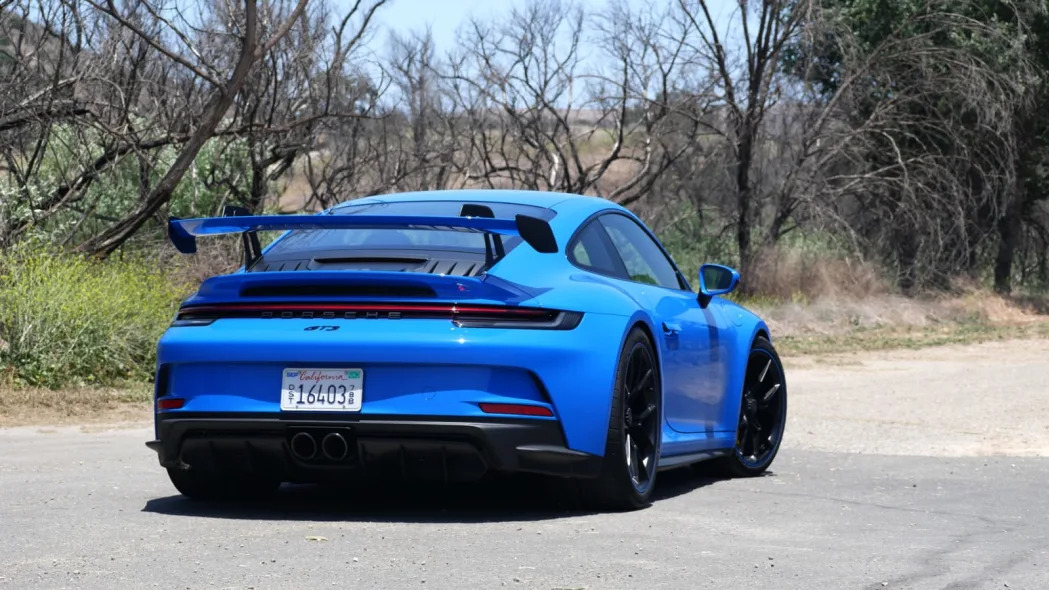
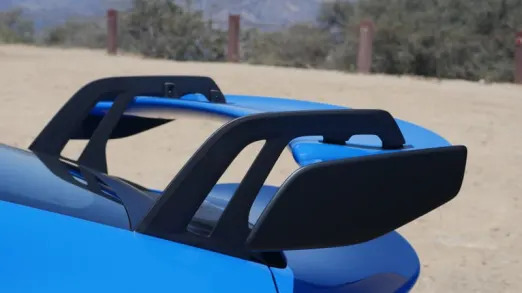
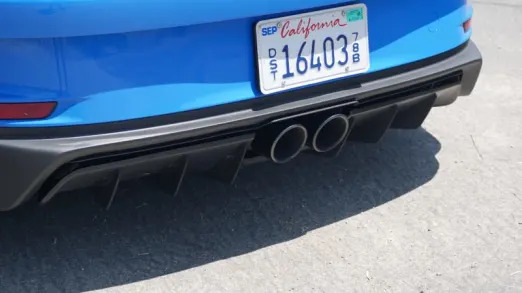
Of course, the GT3's ability to entertain regardless of speed or venue is all well and good, but this specialized 911 is still intended to live up to its full 9,000-rpm potential on a track. Besides the sharper turn-in, the new double-wishbone front axle results in higher camber stiffness under high compression (and therefore high speeds), provides more constant support to the outside wheel, and greatly reduces lateral forces on the shock absorbers. All of that increases stability and cornering force potential. (It also counteracts brake dive, which allows for softer springs to be used and therefore what I can confirm is a surprisingly compliant ride). Meanwhile, in addition to the rear-wheel steering and fat 315/30 ZR21 summer tires, the rear axle features a five-link suspension with additional ball joints for the lower control arms, and manually adjustable camber and stabilizer bar stiffness. The springs are also stiffer, but have special helper springs as on Porsche race cars that extend spring travel to ensure tire contact despite the high spring rates. To put all that very simply: A lot was done to make sure the wheels stay in optimal contact for maximum, high-speed cornering.
Plenty was done up above in that endeavor, too. Porsche says the GT3's aerodynamics were also adapted from the 911 RSR LeMans race car. The most obvious element is the manually adjustable "swan-neck" wing, which does a lot more than look cool. The uprights' unique up-and-over design allows air to flow more freely under the wing, which results in 50% more downforce than the last GT3's wing. Impressive, but the new rear diffuser sucks even more, as it generates four times as much downforce as its predecessor. With the wing set at its track-only position, overall downforce at 125 mph is 150% better than the old GT3. It's suddenly not surprising that the new GT3 smoked it by 17 seconds round the 'Ring.
Although some of Malibu's greatest hits remain literally smoked, there's thankfully still an awful lot left to enjoy. The slalom-like jaunt at the end of Old Topanga Canyon. The intense set of esses and hairpins on Piuma Road. The concurrent pair of downhill carousels on Encinal Canyon that perfectly demonstrated all that extra grip and downforce, sticking and sucking the car to the pavement with an ease and speed that makes you want to flip a U and do it all again. And I did. Indeed, all that grip made using those $9,210 ceramic brakes a rare occurrence. It was mostly ease up on throttle, turn in, hit apex, ease back into throttle. You'd have to be going really fast on these public roads to really need the standard brakes, let alone the ceramic ones.
Ultimately, that just means that like most high-end sports cars, the 2021 Porsche 911 GT3 is far more car than is necessary for the real world – especially when you consider that Malibu roads are hardly indicative of the "real world." You really need a track. But unlike so many of those other high-end sports cars, the GT3 actually seems destined to find itself on a track. And if you don't see that in the cards, at lease Porsche offers the GT3 Touring that sacrifices some max attack capability (and its wing) for a more visually subtle appearance and greater luxury. Both are actually priced the same with a starting point of $162,450 (our tester went up to $197,670 thanks to high-ticket items like the PCC brakes, the $3,670 front-axle lift system, $5,900 full bucket seats, $6,230 leather/Race-Tex upholstery and $4,220 Shark Blue paint). If you can afford all that, you can afford some track time. And some time off to make a grand return to some of your favorite driving roads.
Related Video:
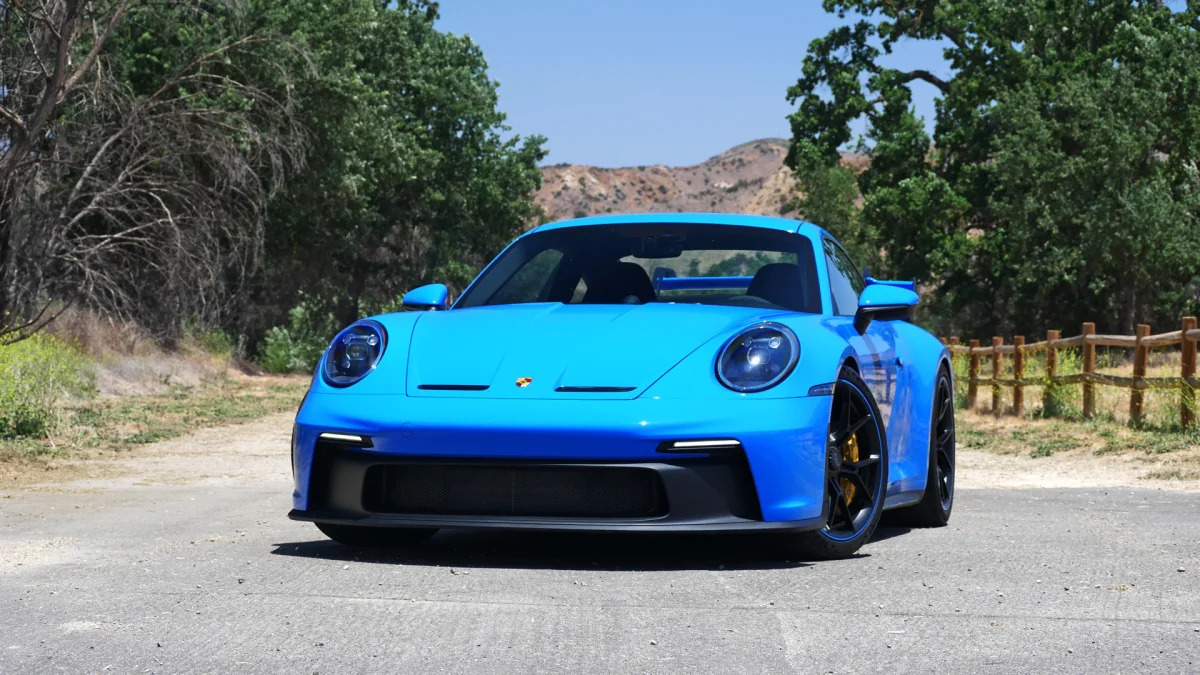










Sign in to post
Please sign in to leave a comment.
Continue